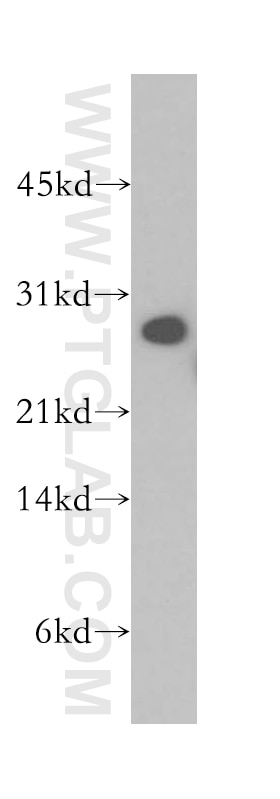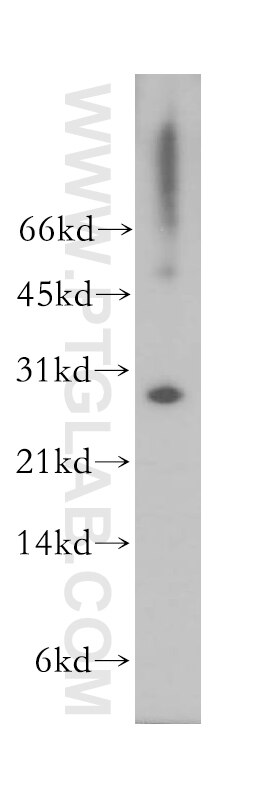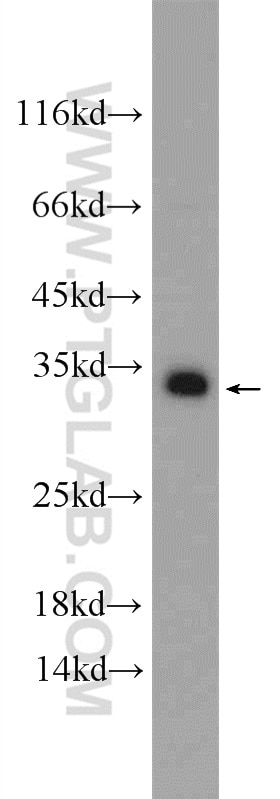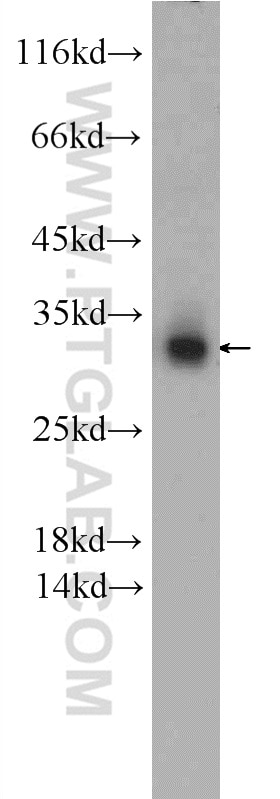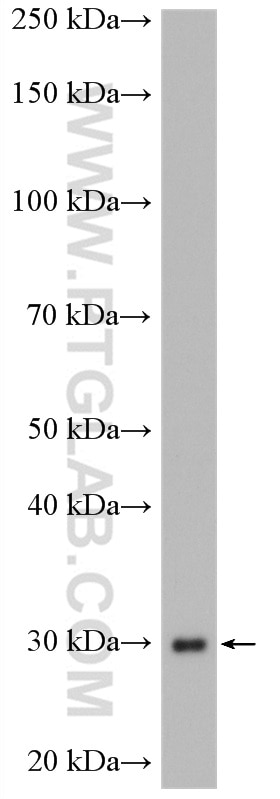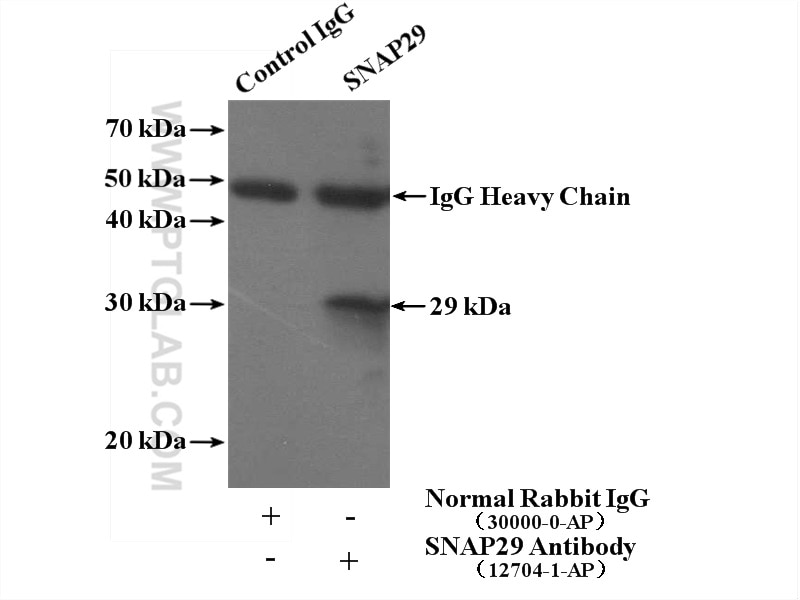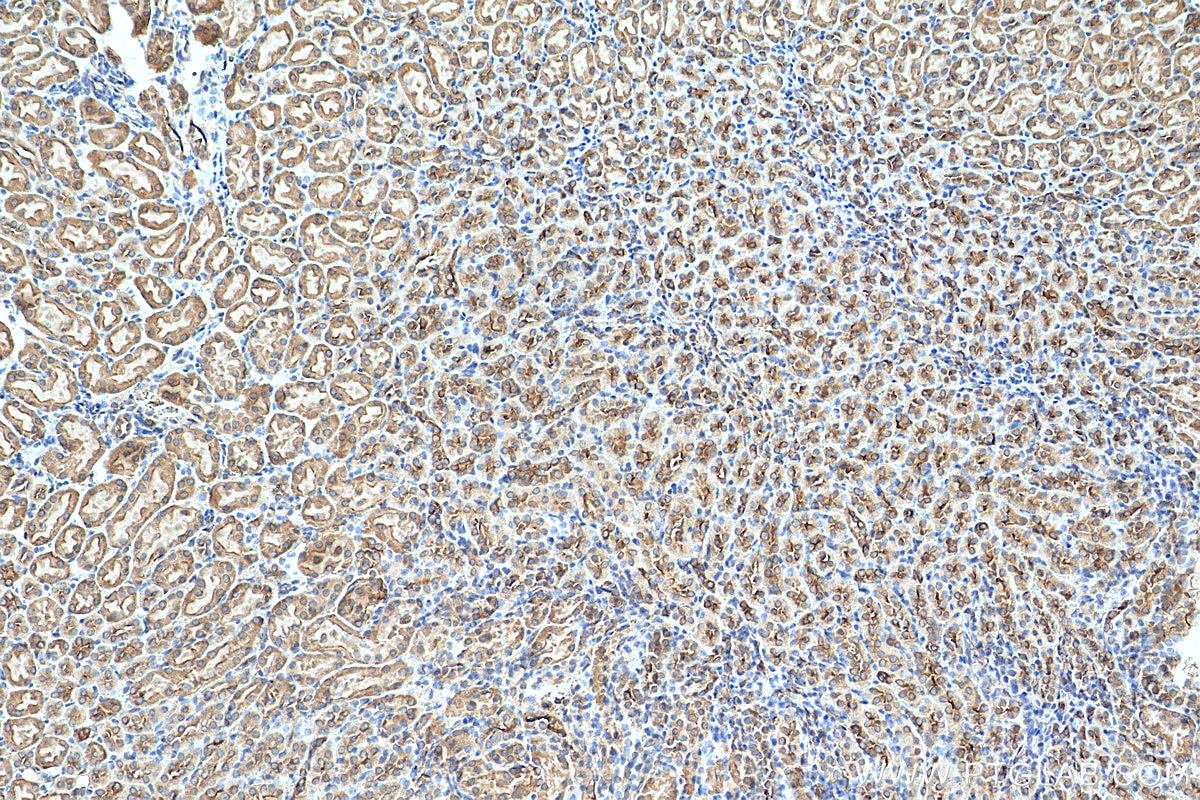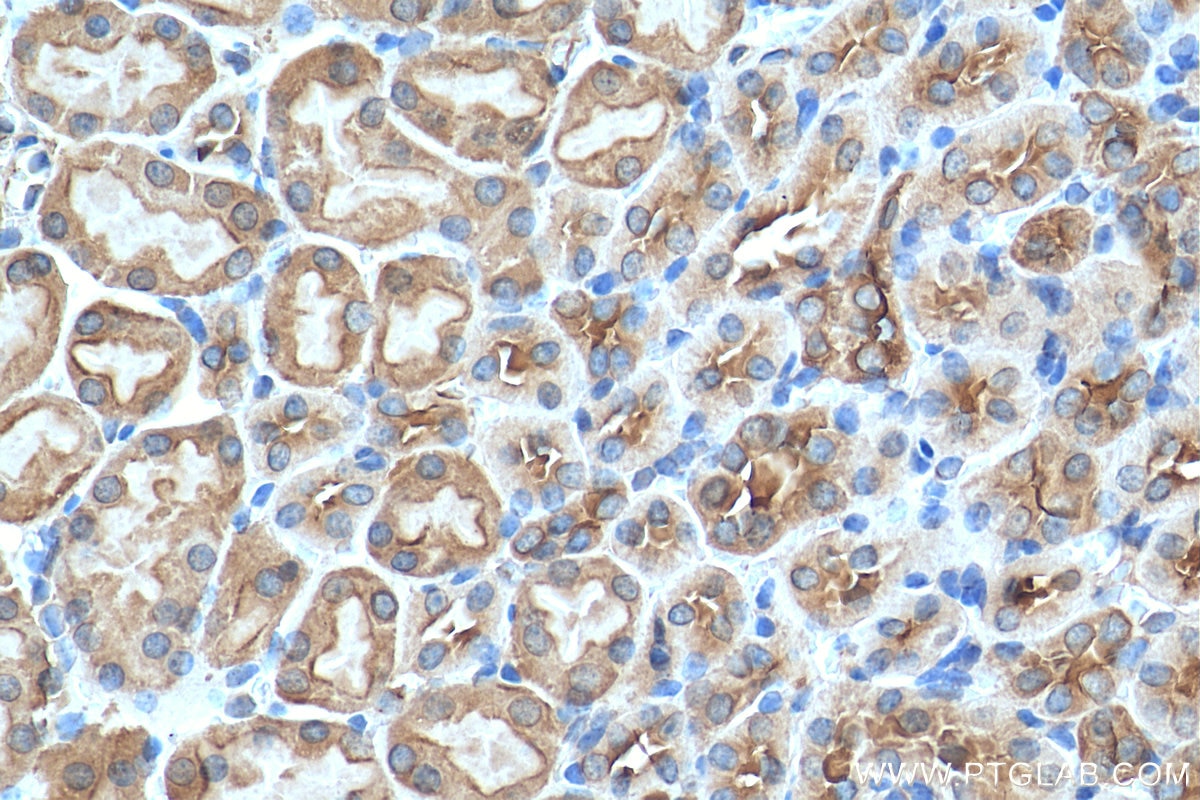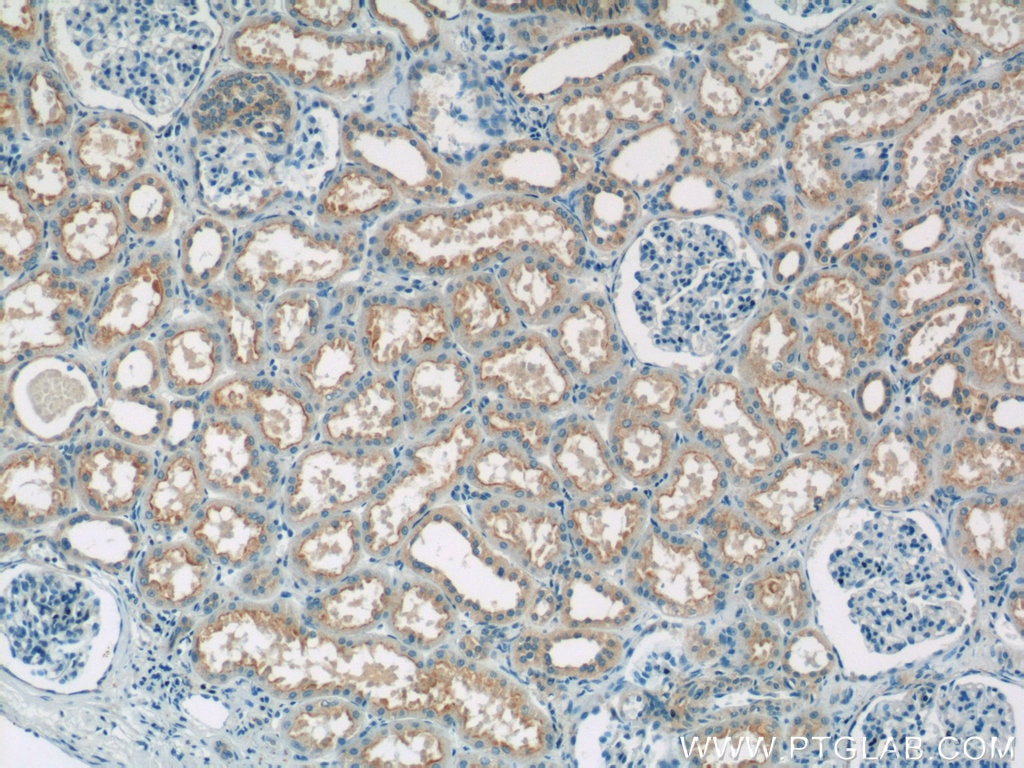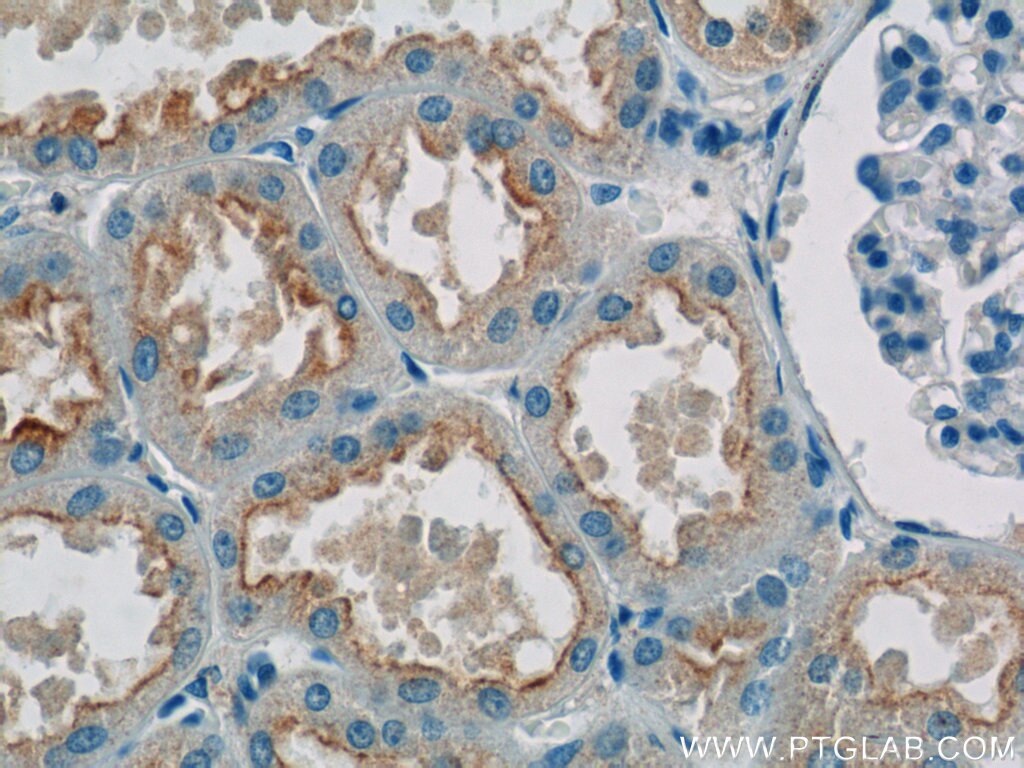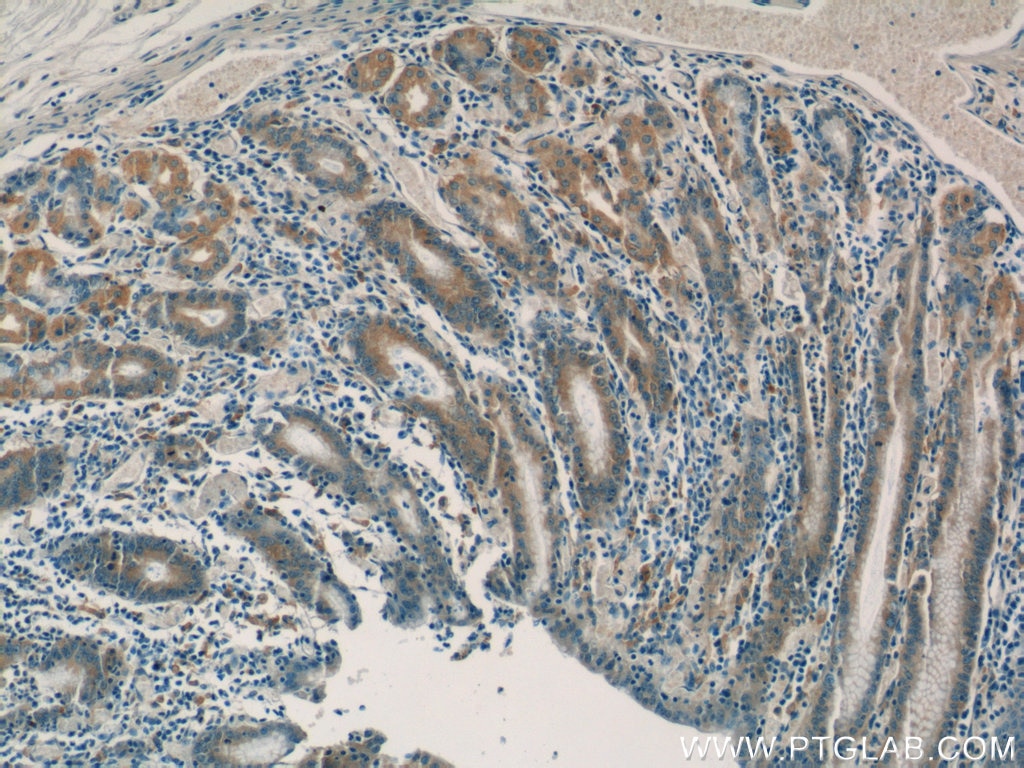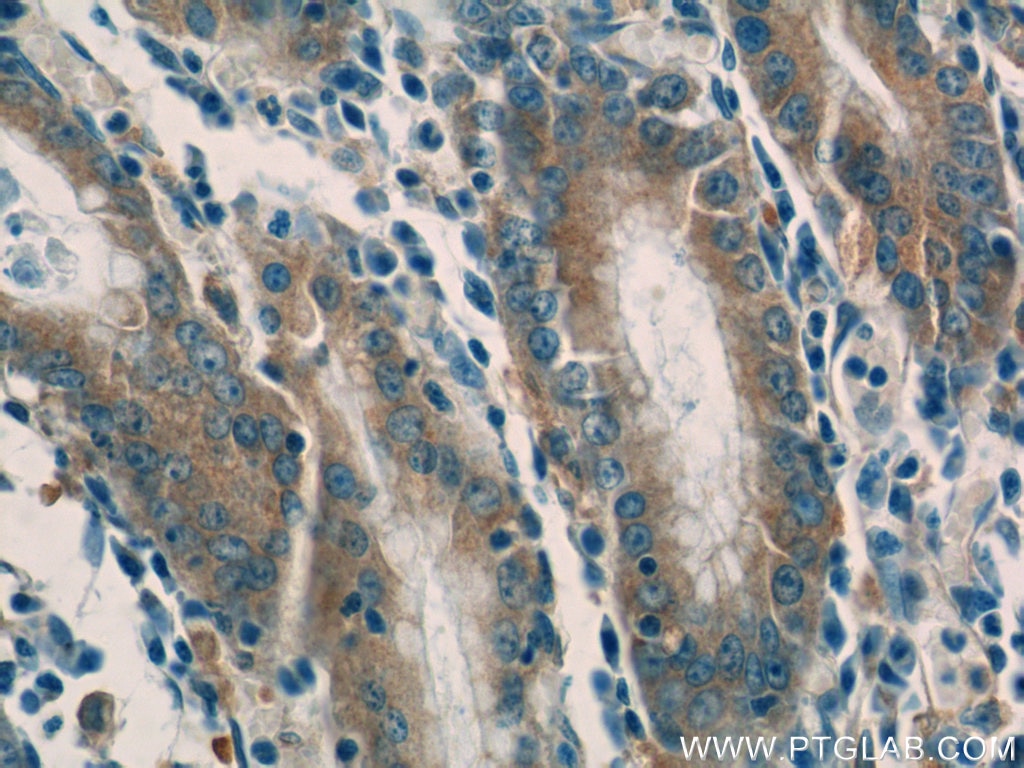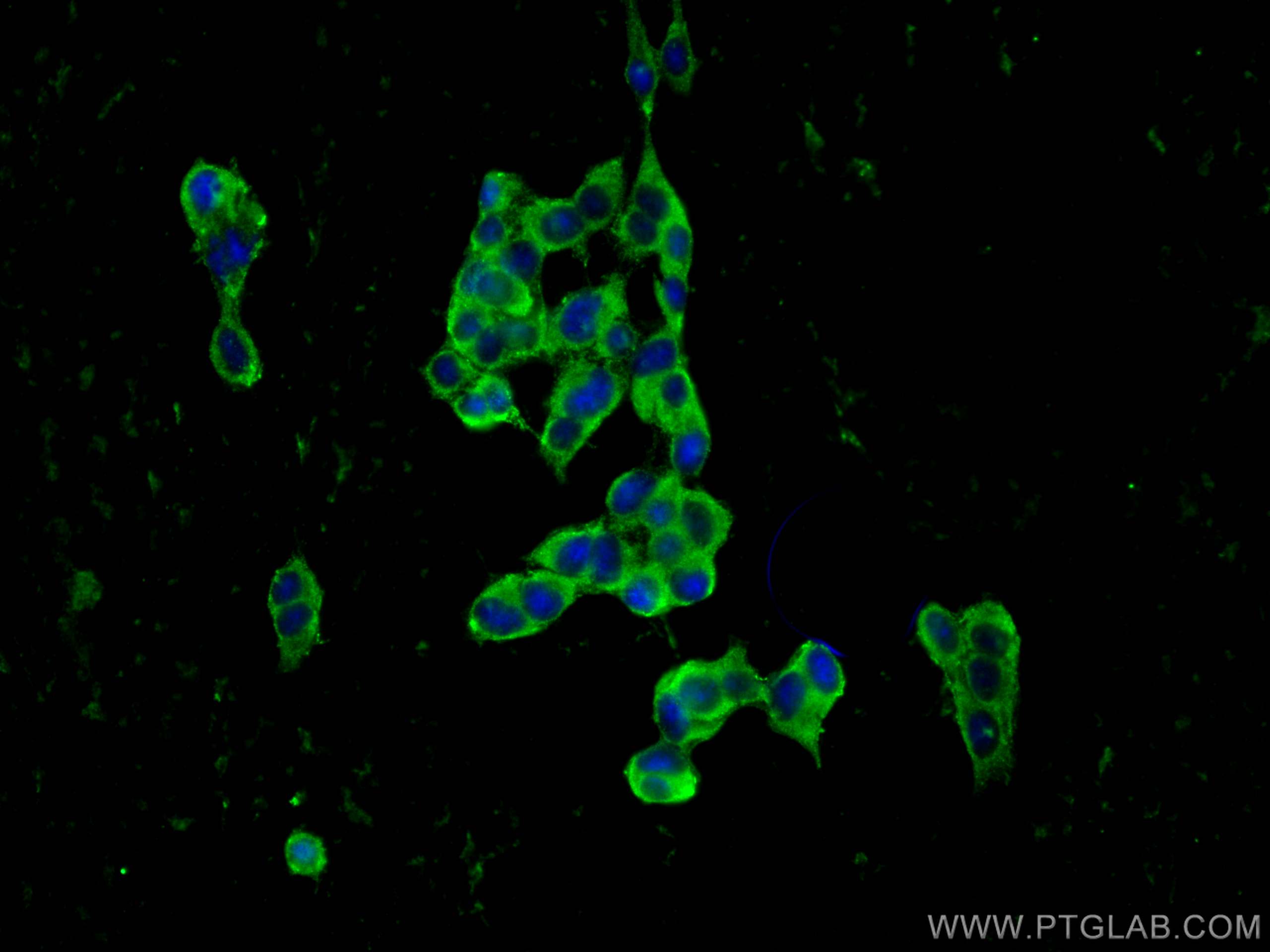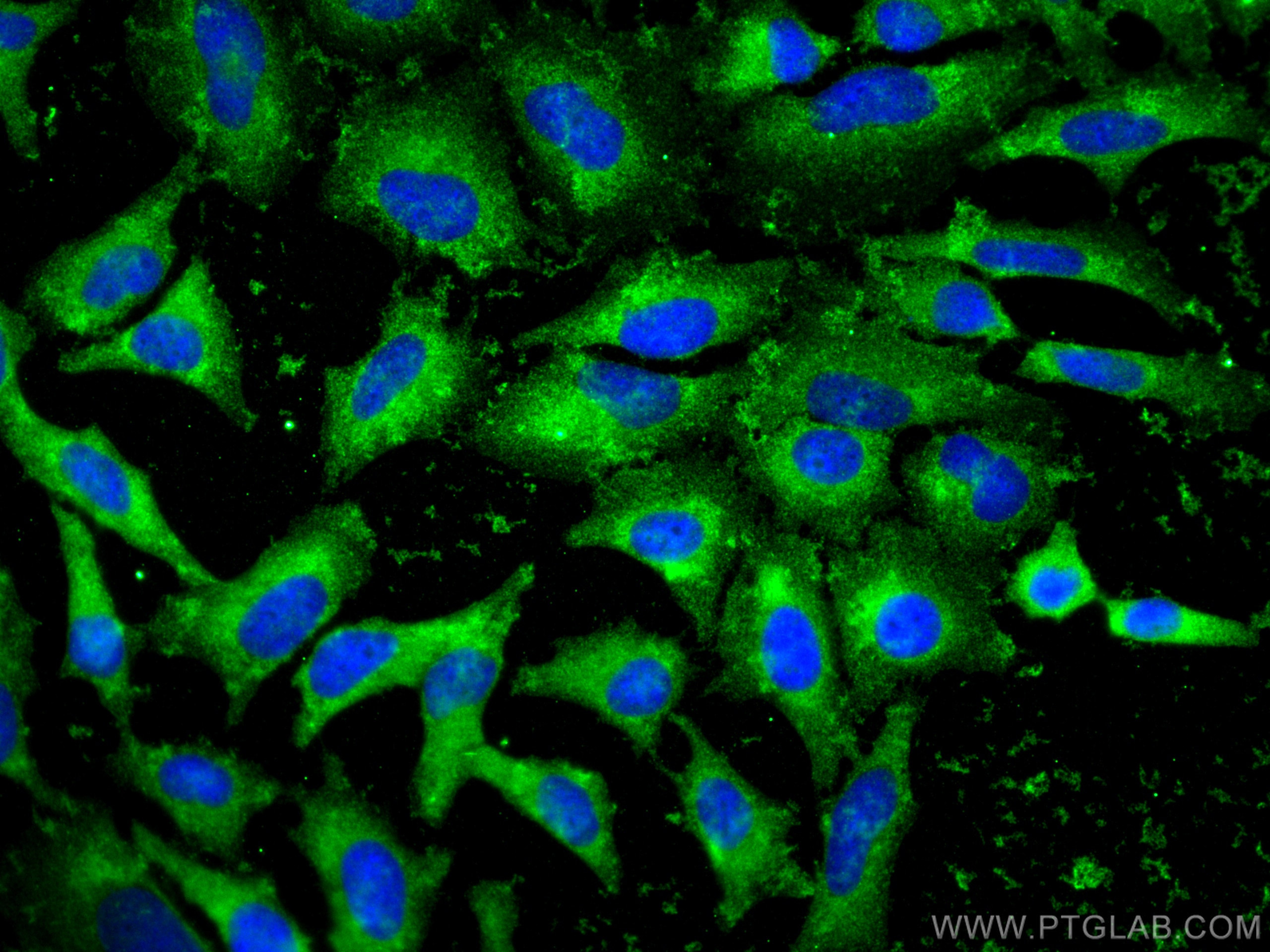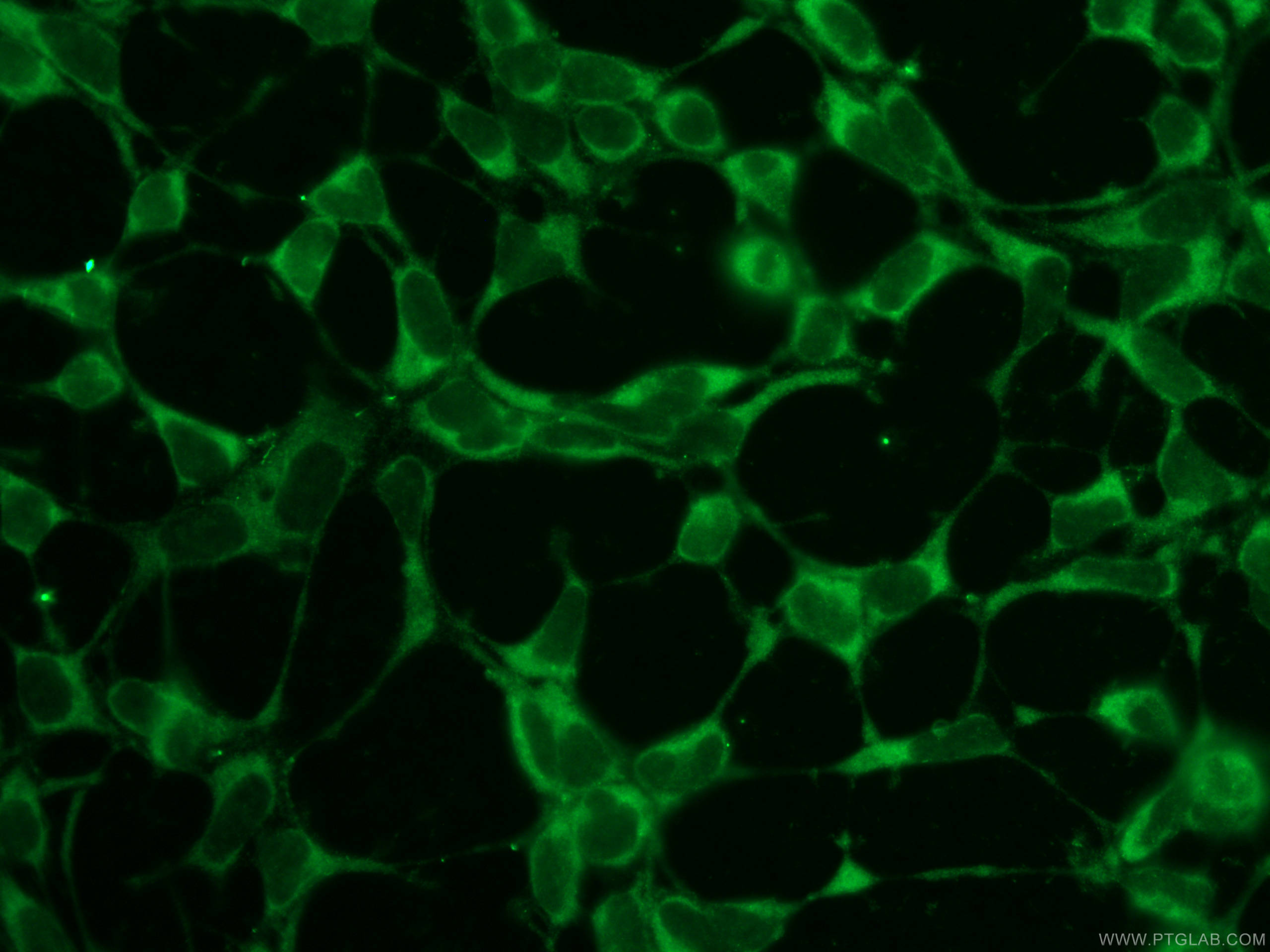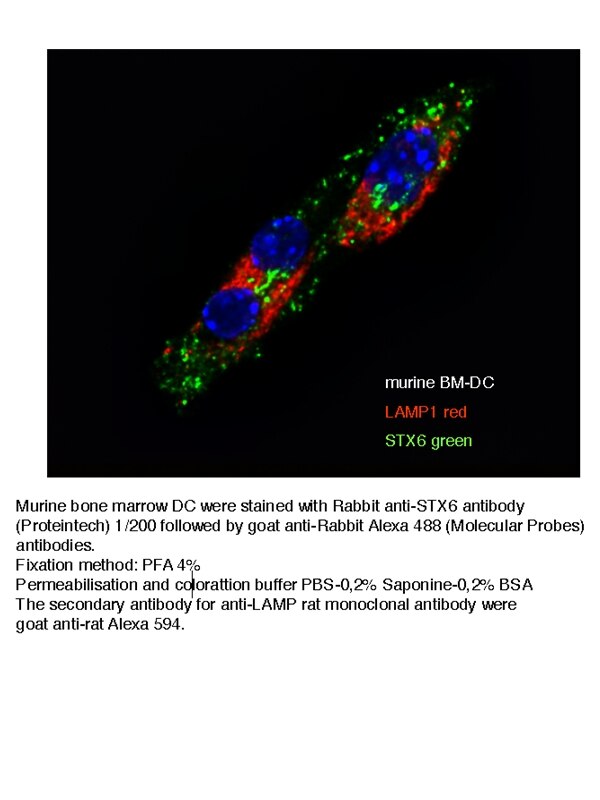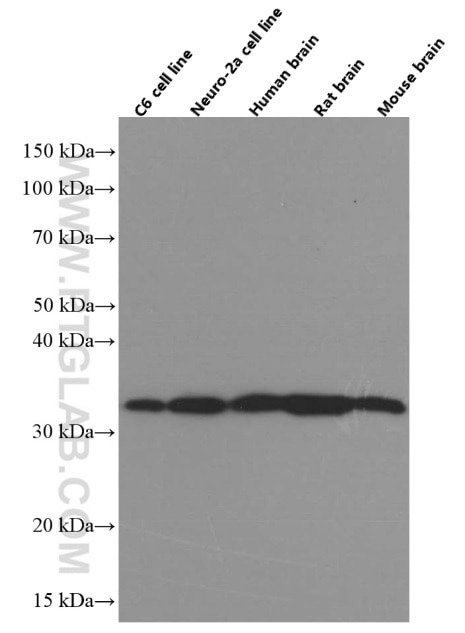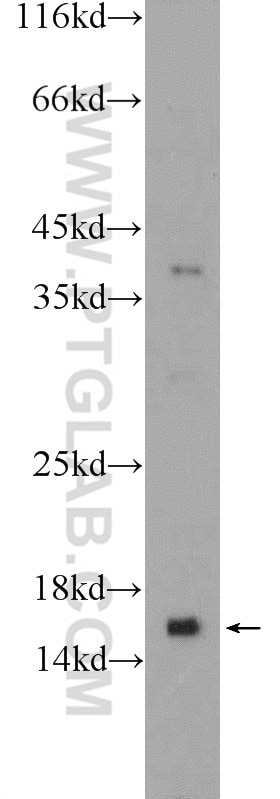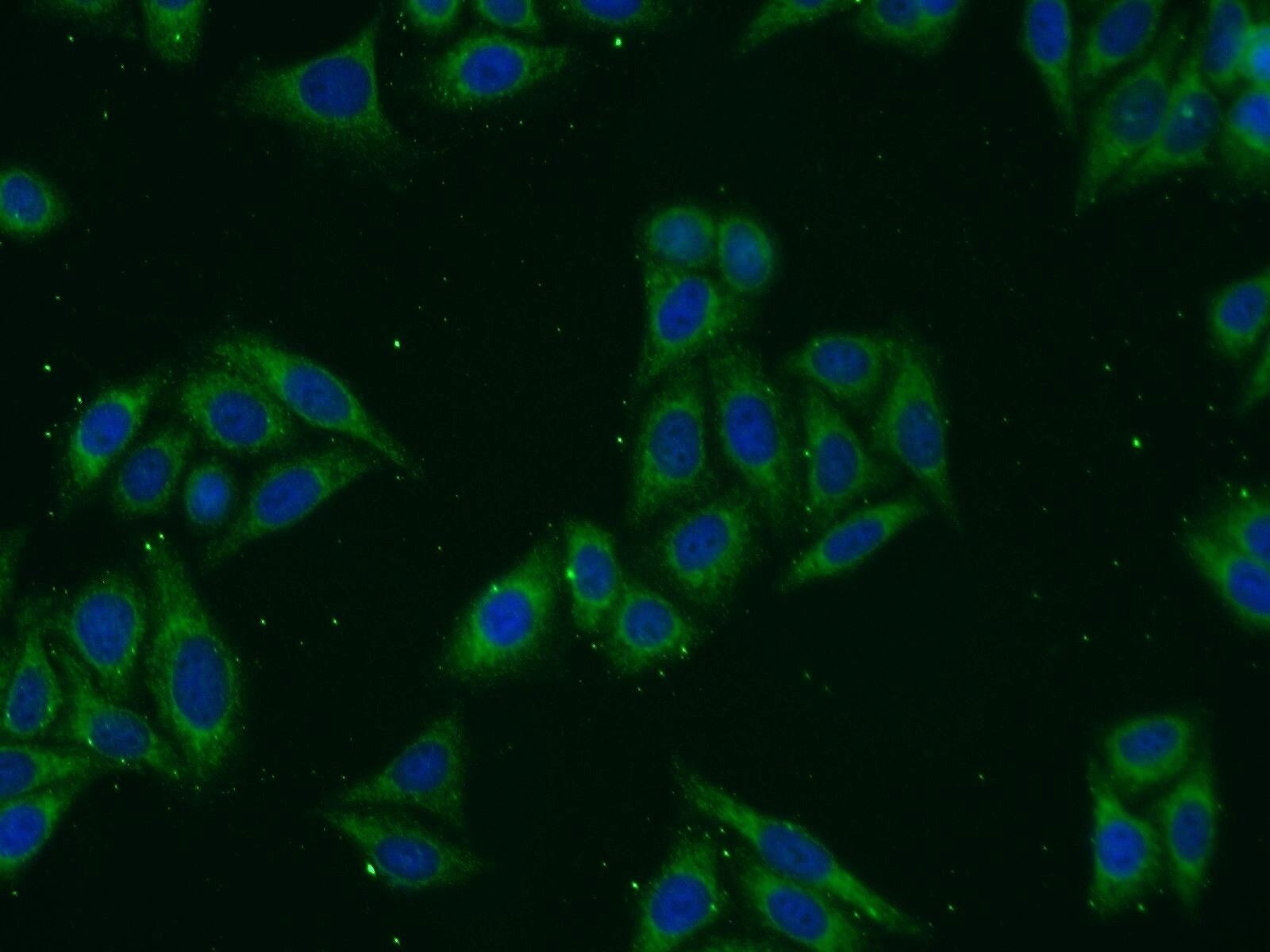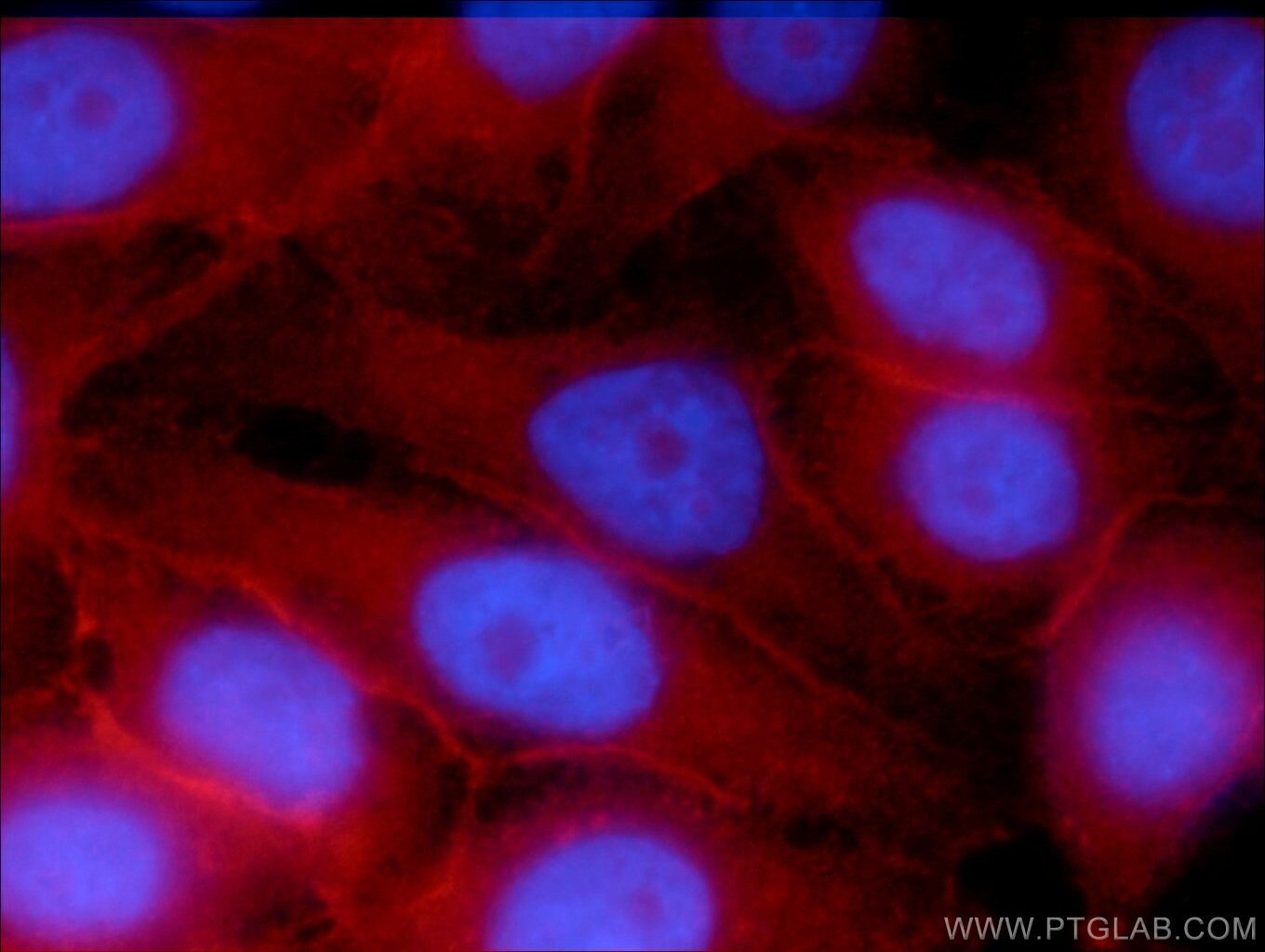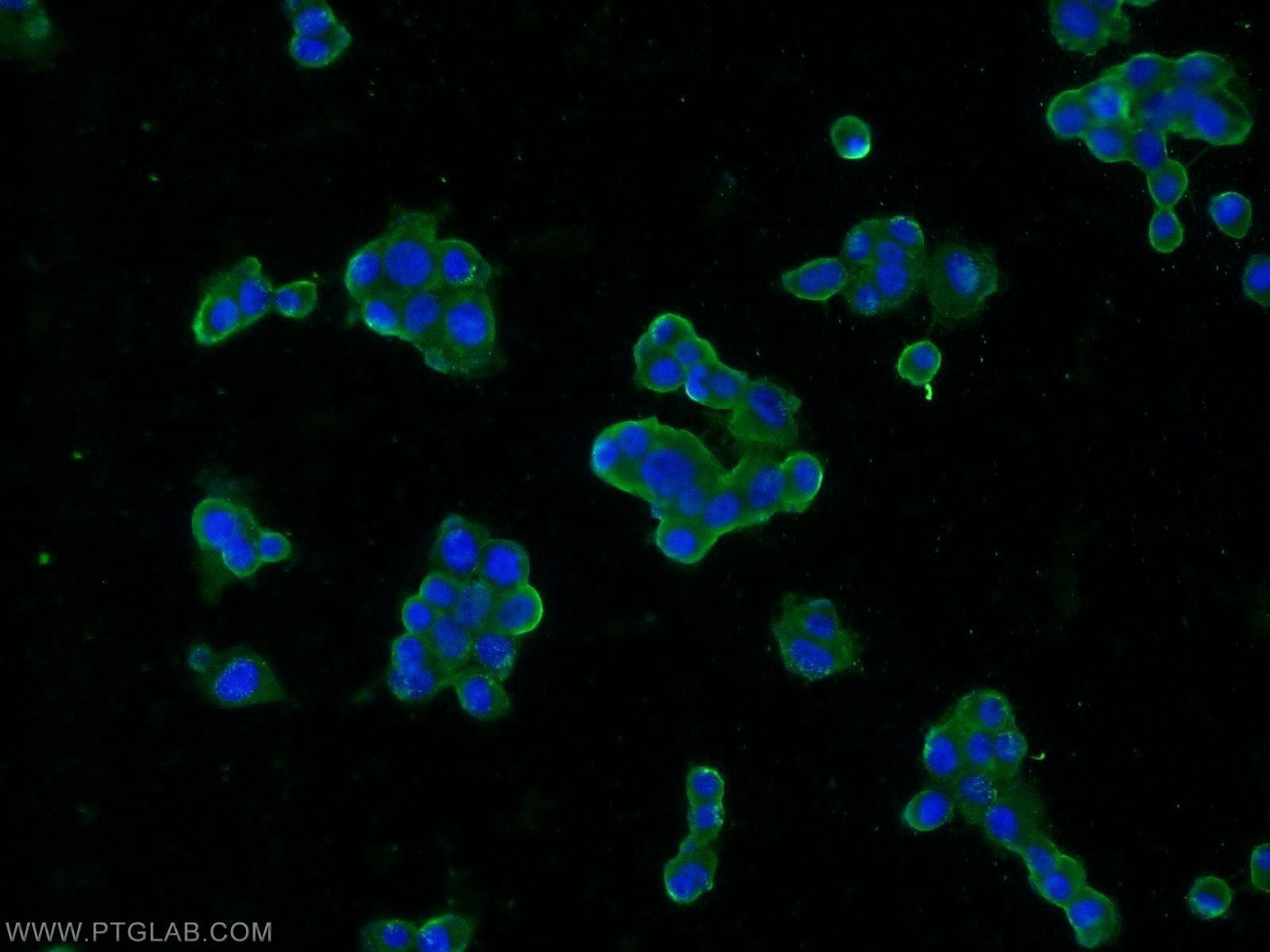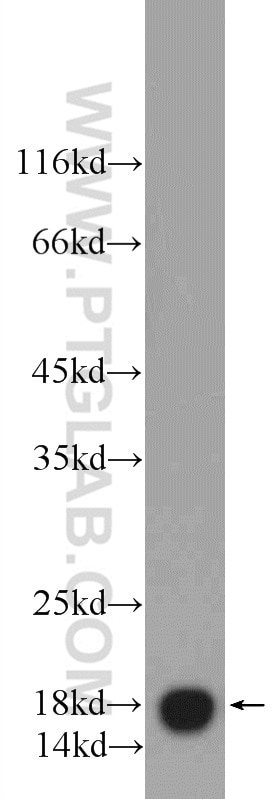- Featured Product
- KD/KO Validated
SNAP29 Polyklonaler Antikörper
SNAP29 Polyklonal Antikörper für WB, IHC, IF/ICC, IP, ELISA
Wirt / Isotyp
Kaninchen / IgG
Getestete Reaktivität
human, Maus, Ratte
Anwendung
WB, IHC, IF/ICC, IP, CoIP, ELISA
Konjugation
Unkonjugiert
Kat-Nr. : 12704-1-AP
Synonyme
Galerie der Validierungsdaten
Geprüfte Anwendungen
| Erfolgreiche Detektion in WB | humanes Nierengewebe, HEK-293-Zellen, humanes Lebergewebe, Jurkat-Zellen, K-562-Zellen |
| Erfolgreiche IP | Jurkat-Zellen |
| Erfolgreiche Detektion in IHC | Mausnierengewebe, humanes Magengewebe, humanes Nierengewebe Hinweis: Antigendemaskierung mit TE-Puffer pH 9,0 empfohlen. (*) Wahlweise kann die Antigendemaskierung auch mit Citratpuffer pH 6,0 erfolgen. |
| Erfolgreiche Detektion in IF/ICC | PC-12-Zellen, HEK-293-Zellen, HeLa-Zellen |
Empfohlene Verdünnung
| Anwendung | Verdünnung |
|---|---|
| Western Blot (WB) | WB : 1:500-1:2000 |
| Immunpräzipitation (IP) | IP : 0.5-4.0 ug for 1.0-3.0 mg of total protein lysate |
| Immunhistochemie (IHC) | IHC : 1:50-1:500 |
| Immunfluoreszenz (IF)/ICC | IF/ICC : 1:50-1:500 |
| It is recommended that this reagent should be titrated in each testing system to obtain optimal results. | |
| Sample-dependent, check data in validation data gallery | |
Veröffentlichte Anwendungen
| KD/KO | See 3 publications below |
| WB | See 23 publications below |
| IHC | See 1 publications below |
| IF | See 2 publications below |
| IP | See 1 publications below |
| CoIP | See 1 publications below |
Produktinformation
12704-1-AP bindet in WB, IHC, IF/ICC, IP, CoIP, ELISA SNAP29 und zeigt Reaktivität mit human, Maus, Ratten
| Getestete Reaktivität | human, Maus, Ratte |
| In Publikationen genannte Reaktivität | human, Maus, Ratte |
| Wirt / Isotyp | Kaninchen / IgG |
| Klonalität | Polyklonal |
| Typ | Antikörper |
| Immunogen | SNAP29 fusion protein Ag3382 |
| Vollständiger Name | synaptosomal-associated protein, 29kDa |
| Berechnetes Molekulargewicht | 258 aa, 29 kDa |
| Beobachtetes Molekulargewicht | 29 kDa |
| GenBank-Zugangsnummer | BC009715 |
| Gene symbol | SNAP29 |
| Gene ID (NCBI) | 9342 |
| Konjugation | Unkonjugiert |
| Form | Liquid |
| Reinigungsmethode | Antigen-Affinitätsreinigung |
| Lagerungspuffer | PBS mit 0.02% Natriumazid und 50% Glycerin pH 7.3. |
| Lagerungsbedingungen | Bei -20°C lagern. Nach dem Versand ein Jahr lang stabil Aliquotieren ist bei -20oC Lagerung nicht notwendig. 20ul Größen enthalten 0,1% BSA. |
Hintergrundinformationen
SNAREs, soluble N-ethylmaleimide-sensitive factor-attachment protein receptors, are essential proteins for the fusion of cellular membranes. SNAREs localized on opposing membranes assemble to form a trans-SNARE complex, an extended, parallel four alpha-helical bundle that drives membrane fusion. SNAP29 is a SNARE involved in autophagy through the direct control of autophagosome membrane fusion with the lysosome membrane. SNAP29 plays also a role in ciliogenesis by regulating membrane fusions.
Protokolle
| Produktspezifische Protokolle | |
|---|---|
| WB protocol for SNAP29 antibody 12704-1-AP | Protokoll herunterladen |
| IHC protocol for SNAP29 antibody 12704-1-AP | Protokoll herunterladen |
| IF protocol for SNAP29 antibody 12704-1-AP | Protokoll herunterladen |
| IP protocol for SNAP29 antibody 12704-1-AP | Protokoll herunterladen |
| Standard-Protokolle | |
|---|---|
| Klicken Sie hier, um unsere Standardprotokolle anzuzeigen |
Publikationen
| Species | Application | Title |
|---|---|---|
Nat Cell Biol Early steps in primary cilium assembly require EHD1/EHD3-dependent ciliary vesicle formation.
| ||
Nat Cell Biol Early steps in primary cilium assembly require EHD1/EHD3-dependent ciliary vesicle formation.
| ||
Autophagy SDC1-dependent TGM2 determines radiosensitivity in glioblastoma by coordinating EPG5-mediated fusion of autophagosomes with lysosomes | ||
Nat Commun Kansl1 haploinsufficiency impairs autophagosome-lysosome fusion and links autophagic dysfunction with Koolen-de Vries syndrome in mice. | ||
Autophagy The ORF7a protein of SARS-CoV-2 initiates autophagy and limits autophagosome-lysosome fusion via degradation of SNAP29 to promote virus replication. |
Rezensionen
The reviews below have been submitted by verified Proteintech customers who received an incentive for providing their feedback.
FH Simone (Verified Customer) (03-02-2023) | I used the antibody one time for a westernblot analysis of cells (Stable HeLa cell line expressing sec61b-GFP) which I transfected with siRNA targeting SNAP29 on the one hand and scrambled siRNA on the other hand. I observed a probably specific signal at around 30 kDa, indicated by a strong reduction in the sample from the cells in which I down regulated the protein. I observed a strong unspecific signal at around 40 kDa and weaker unspecific signals at around 70 kDa. I also used the antibody for immunofluorescence one time. I transfected the cells as for the western blot and fixed them with PLP on coverslips and incubated the coverslips overnight with the antibody at 4°C. On the next day I stained the coverslips using an anti rabbit antibody, coupled with Alexa 568 fluorophore. I imaged mainly mitotic cells (see picture attached). I observed a broad staining of the hole cells, leaving out the chromosomal area. I also imaged a few interphase cells, but also observed a rather broad signal. In some interphase cells, especially at the edge of some kind of vesicles I observed a stronger, probably specific staining.
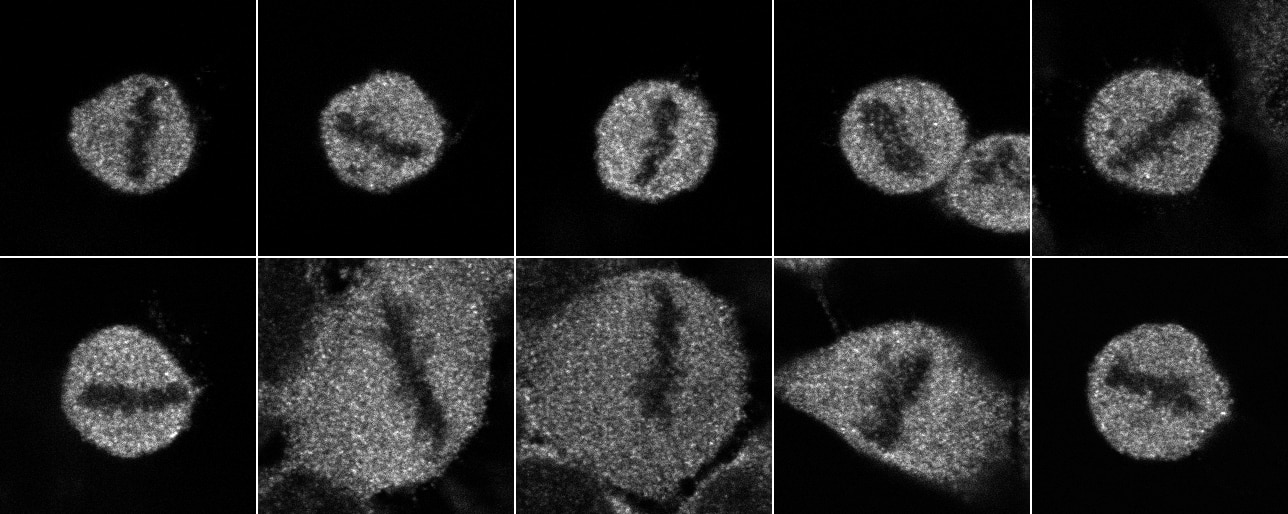 |
